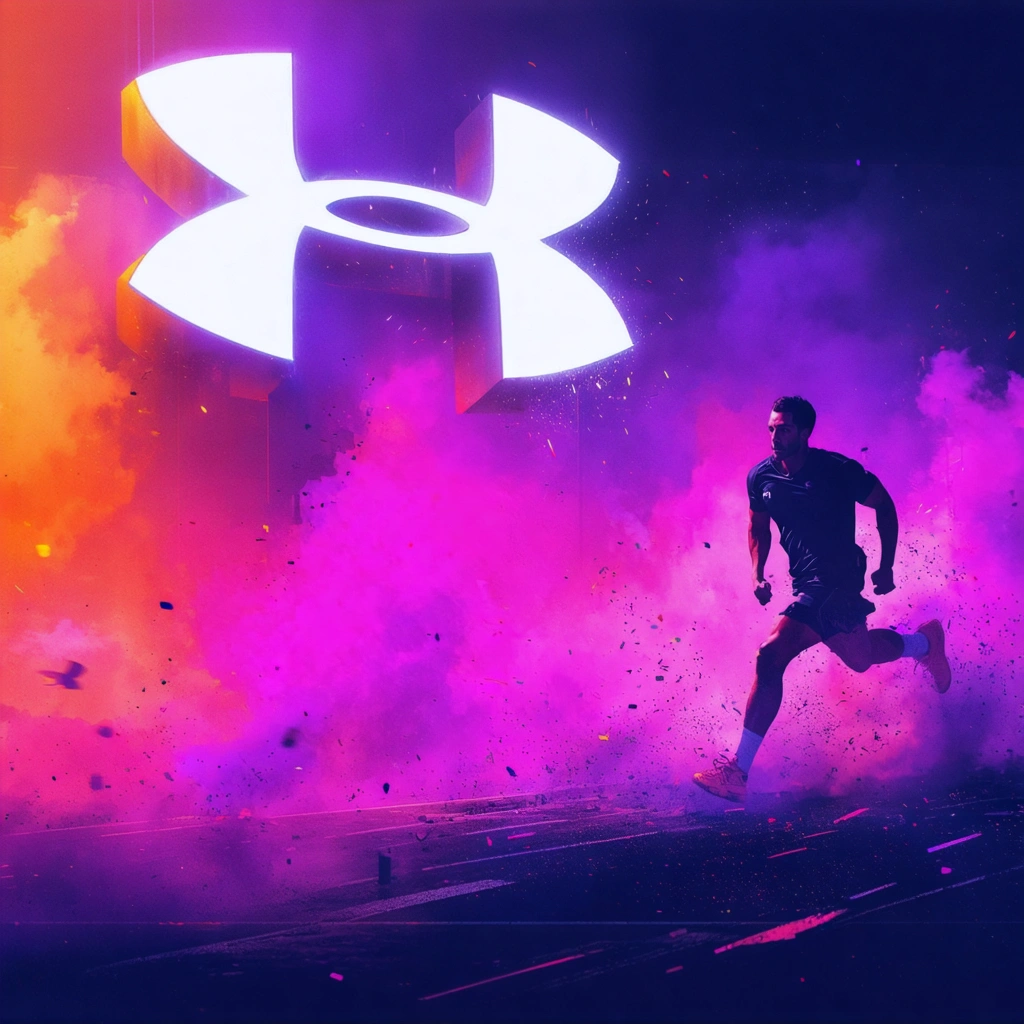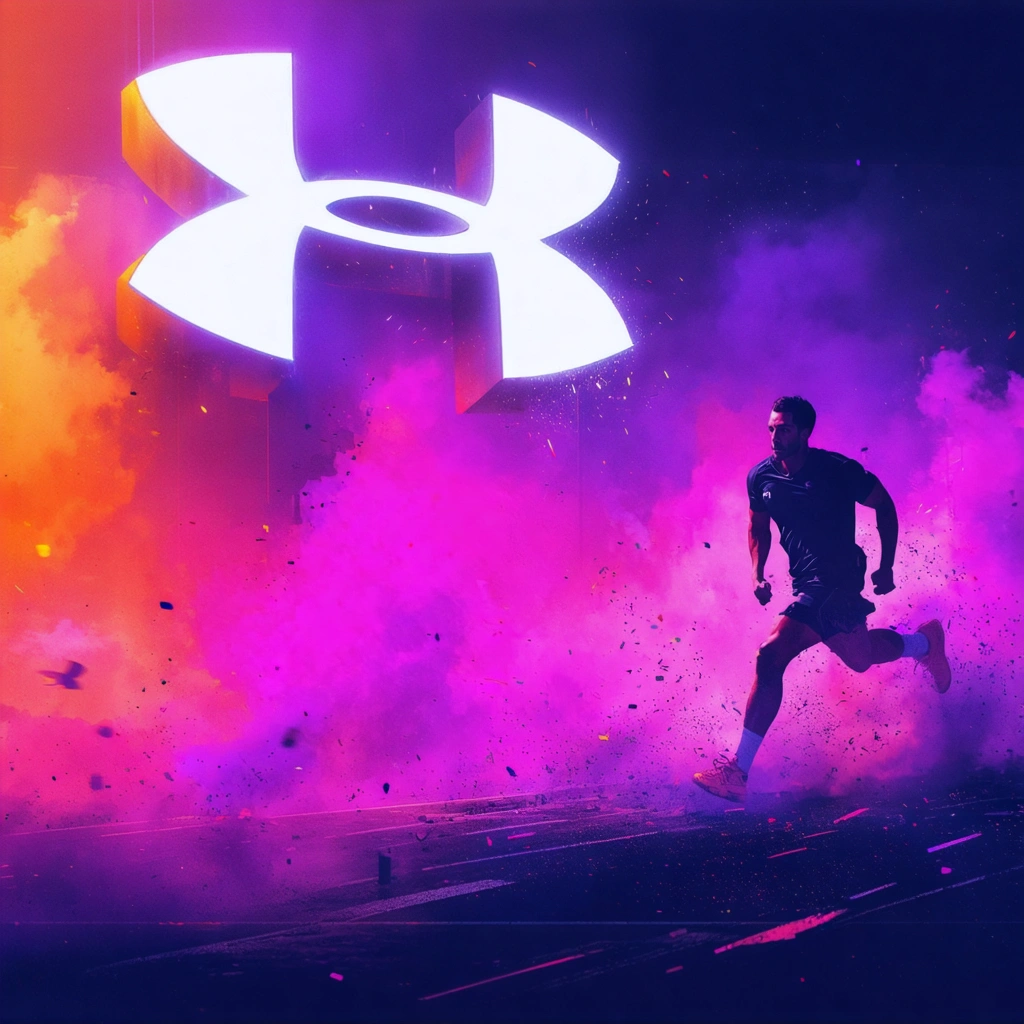The Marketing Muscle of Under Armour’s Logo: Under Armour’s logo embodies strength and performance, driving brand recognition.

More Than Just a Symbol: Why the Under Armour Logo Packs a Punch
Have you ever paused to consider how a simple icon can carry the weight of an entire brand’s identity? The under armour logo—those interlocking U and A shapes—is far from just a pretty design. It’s a powerhouse of marketing muscle, a visual shorthand for strength, endurance, and cutting-edge athletic performance. In a world cluttered with countless sports brands vying for attention, the logo under armour wields is a strategic weapon that cuts through the noise. But what exactly makes this emblem so effective in connecting with its target audience? How has it become synonymous with the brand’s promise, especially in competitive arenas like under armour basketball and tech apparel? And how does it help the brand hold its own against under armour competitors? These are the questions we’re diving into.
Picture this: you’re walking through a crowded sporting goods store. Your eyes scan the shelves, and amid a sea of logos—from swooshes to stripes—your gaze locks onto that distinctive under armour logo. It instantly communicates a story of toughness, innovation, and athletic aspiration. This isn’t accidental. Behind this logo lies a carefully crafted marketing narrative designed to resonate deeply with under armour’s target market—athletes and fitness enthusiasts who demand performance and style in equal measure. But the journey of that logo from design to cultural icon is anything but straightforward.
Carving Out a Niche Against Fierce Competitors
Under Armour didn’t just stumble onto the sportswear scene and hope for the best. In a marketplace dominated by giants, competing with brands like Nike and Adidas, the company needed more than just quality products—they needed an identity that embodied what their audience craved. The logo under armour chose was a visual representation of resilience and innovation, reflecting the very essence of their groundbreaking products like the under armour tech tee, which revolutionized moisture-wicking fabrics. This wasn’t just about looking good; it was about performing better.
Consider the under armour campaign strategies that consistently highlight the logo as a badge of honor for athletes pushing their limits. This approach doesn’t just sell apparel; it sells a mindset, a community, and a promise of excellence. By aligning the logo with stories of grit and triumph, Under Armour has managed to build an emotional bridge with its consumers that’s difficult for under armour competitors to mimic.
But why does this matter? Because in the end, logos are more than graphics—they’re vessels of trust and aspiration. For Under Armour’s target market, the logo is a seal of approval, a signal that says: “You’re equipped to perform at your best.” Whether you’re suited up in under armour basketball gear or rocking the latest tech tee in your daily workouts, that emblem is a constant reminder of the brand’s commitment to empowering athletes everywhere.
What This Article Will Explore
- The strategic design elements of the under armour logo that communicate strength and performance.
- How the logo supports and amplifies Under Armour’s marketing campaigns, creating lasting brand recognition.
- Insights into how the logo helps differentiate Under Armour from competitors in a crowded sportswear market.
- A closer look at the under armour target market and how the logo appeals to their values and aspirations.
- Examples of the logo’s role in product lines like the under armour tech tee and under armour basketball collections.
By the end of this post, you’ll have a nuanced understanding of why the under armour logo isn’t just a mark—it’s a marketing powerhouse that propels the brand forward, inspiring loyalty and performance both on and off the field. So, let’s lace up and jump right into the story behind this iconic symbol.

The Marketing Muscle of Under Armour’s Logo: How It Drives Brand Strength and Recognition
What makes the Under Armour logo so powerful in marketing?
The under armour logo is a masterclass in simplicity and symbolism, embodying strength, resilience, and peak performance—qualities that resonate deeply with its target audience. Designed to be instantly recognizable, the logo features two interlocking "U" and "A" letters forming a symmetrical, shield-like shape that conveys protection and durability. This visual identity aligns perfectly with Under Armour’s brand promise: apparel and gear engineered to empower athletes and active individuals.
From a marketing perspective, the logo acts as a visual shorthand for the brand’s core values, helping build immediate recognition and trust. Its bold, clean design makes it highly versatile across various media, whether on a logo under armour product like the popular under armour tech tee or on advertising materials for their sports lines.
How does Under Armour’s logo influence brand recognition and consumer perception?
Brand recognition is critical in the competitive sportswear market, and the under armour logo plays a vital role in this. According to industry research, logos that are simple yet unique can increase brand recall by up to 80%. Under Armour’s logo benefits from:
- Consistency: The logo has remained largely unchanged since its inception, creating a stable and trustworthy image.
- Visibility: Its placement on high-performance products like the under armour tech tee and under armour basketball gear ensures it’s seen by athletes and fans alike.
- Emotional connection: The logo symbolizes empowerment, motivating athletes to push their limits, which strengthens brand loyalty.
For example, during the 2016 Under Armour campaign featuring Stephen Curry, the logo was prominently displayed, linking the brand with one of basketball’s most inspiring stories. This connection reinforced Under Armour’s image as a brand that supports serious athletes, driving both sales and brand prestige.
In what ways does the Under Armour logo support the brand’s marketing campaigns?
The under armour campaign strategies heavily leverage the logo’s symbolism. The logo acts as a visual anchor that unifies messaging across platforms—from digital ads and social media to sponsorships and in-store displays. Campaigns like “I Will What I Want” use the logo to signify determination and individuality, making it a rallying point for consumers who identify with those values.
Additionally, the logo helps create a cohesive brand experience across product categories. Whether the campaign highlights gym wear, running gear, or the under armour basketball collection, the consistent use of the logo ties everything back to Under Armour’s core promise of performance and innovation.
Who is Under Armour’s target market, and how does the logo appeal to them?
Understanding the under armour target market is essential to appreciating why the logo is so effective. Under Armour primarily targets:
- Athletes and fitness enthusiasts: Individuals who prioritize performance and durability in their sportswear.
- Younger demographics: Millennials and Gen Z who value brand authenticity and aspirational messaging.
- Active lifestyle consumers: People seeking versatile apparel for both athletic and casual use.
The logo’s bold and clean design appeals to these groups by reflecting energy and confidence. It’s not just a brand mark; it’s a symbol of athletic identity and commitment, which resonates deeply with the target market’s values and aspirations.
How does Under Armour’s logo compare to its competitors?
In a crowded market with giants like Nike and Adidas, the under armour logo distinguishes itself by embodying a unique blend of toughness and modernity. Unlike Nike’s swoosh, which evokes speed and motion, or Adidas’ three stripes symbolizing heritage, Under Armour’s logo emphasizes protection and inner strength.
Market analysis shows that this differentiation helps Under Armour carve out a niche focused on hardcore performance wear. While competitors often emphasize lifestyle and fashion, Under Armour’s logo reinforces its positioning as a science-driven, athlete-first brand. This strategic branding helps the company maintain relevance despite stiff competition.
What role does the Under Armour logo play in product design and innovation?
The logo is not just a marketing tool but also a design element integrated into product innovation. For example, the under armour tech tee features the logo prominently on lightweight, moisture-wicking fabric engineered for superior comfort and performance. This synergy between logo and product underscores the brand’s commitment to quality and innovation.
Similarly, the under armour basketball gear combines cutting-edge technology with the iconic logo to attract serious athletes who demand both style and function. In this way, the logo signals that the product has passed rigorous standards, enhancing consumer confidence in the purchase.
Summary: Why the Under Armour logo is a marketing powerhouse
- Symbolizes strength and performance: The logo’s design reflects the brand’s promise to empower athletes.
- Boosts brand recognition: Consistent use across products and campaigns makes it instantly identifiable.
- Aligns with target market values: Appeals to athletes and active consumers seeking authenticity and durability.
- Differentiates from competitors: Emphasizes toughness and innovation in a crowded sportswear landscape.
- Enhances product credibility: Serves as a mark of quality in technologically advanced apparel like the under armour tech tee.
Ultimately, the under armour logo is more than just a graphic—it's a strategic asset that fuels brand equity, connects emotionally with consumers, and drives the success of Under Armour’s marketing efforts worldwide.




